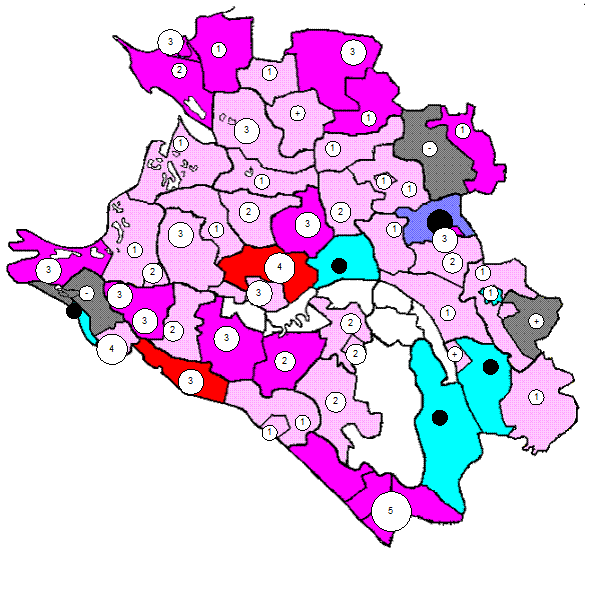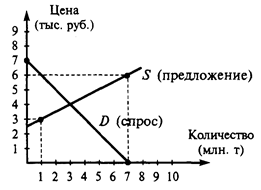Designing Products for People
Have you ever tried on gloves and found the medium size was too big and the small size was too small? Have you ever wondered how designers decided on what a "medium" size is? Technology can make our lives more comfortable through ergonomics. Ergonomics is the study of how the human body relates to things around it. It is also called "human engineering." Places where you live, work, and play are safer, easier for you to use, and more comfortable if they are designed based on the actual human body size. The actual measurements of your height, width, weight, reach (arms extended), and so on are recorded in books as anthropometricinformation or data. Designers and engineers use the size information to determine the dimensions of products such as clothing, furniture, sporting goods, car interiors, and even spacesuits. When designers made the chair you are sitting in, they used the anthropometric data from many people and found a size that would be comfortable for 90 percent of the people. Five percent of the people will probably be too large and another five percent will be too small for that particular chair. Because there is such a wide range in sizes of people, it is difficult to make one product that everyone would find comfortable. Is your chair really comfortable? Does it fit you? Not all products are made with ergonomics or anthropometry in mind. Simple everyday things like water faucets and door knobs can sometimes be hard to figure out because they weren't designed with people in mind. Many times they were designed just for looks. In the past, tradition rather than people's needs was also responsible for the way some things were designed. For instance, maybe the reason most automobile engines are located in the front of a car is that the engine replaced the horse. The horse, of course, was in front of the wagon. You might think that designing products around people is just for appearance and isn't very important. That isn't so. Part of ergonomic design is to make products safe for you to use.
б) Поясніть дані поняття, про які йдеться в тексті:
ergonomics, human engineering, anthropometric data, ergonomic design.
в) Дайте відповіді на такі запитання до тексту:
1 What do we call the branch of technology which helps to make our life easier, more comfortable and safe? 2 What information is used to determine the dimensions of products and what do we call it? 3 Do you think it’s impossible to combine comfort, safety and good looks in product design? 4 Can you give some positive examples of product design? 5 Can you give some negative examples of product design?
г) Перекладіть цей текст рідною мовою.
Завдання 13 а) Якщо ви розставите слова в даних реченнях в потрібному порядку, то знайдете серію запитань щодо впливу технічного нововведення на вас та навколишнє середовище. Підмет та присудок (основне дієслово) виділені шрифтом:
1 the, require, or, technology, energy, existing, new, resources, does, less, natural, than, technology, more, an, or? 2 not, it, the, biodegradable, will, for example, damage, environment, by, being? 3 to, it, use, is, easier? 4 save, does, time, it? 5 special, to, does, require, use, training, it? 6 put, does, people, out of, it, work? 7 a, this, need, technology, for, is there, real? 8 technology, is, safe, the? 9 an, of, appropriate, is, use, this, technology?
б) Проаналізуйте яке-небудь технічне відкриття, винахід, нововведення за допомогою цих запитань.
Завдання 14 Перекладіть англійською мовою:
1 Людина не може стати винахідником, якщо вона не вміє творчо мислити. 2 Можливо, нам удасться вирішити цю проблему в найближчому майбутньому. 3 Ми повинні більше уваги приділяти вирішенню проблем, які можуть привести до забруднення навколишнього середовища. 4 Компанії повинні віддавати перевагу екологічно чистій продукції. 5 Іноді нам доводиться вибирати між красою та зручністю, але цього не повинно бути. Ми повинні сполучати те й інше. 6 Нема необхідності жертвувати красою заради комфорту. 7 Не могли б ви мені пояснити, що таке „ергономіка”? Завдання 15 Зі всіх трьох текстів уроку 7 виберіть ключові слова, які відносяться до теми „Innovations: why, what, how.”
Завдання 16 Складіть план доповіді за вказаною темою.
Завдання 17 Зробіть доповідь за темою, використовуючи складений план та ключові слова.
УРОК 10 Завдання 1 Уважно прочитайте подані нижче слова та їх переклад. Запам’ятайте їх:
Завдання 2 Прочитайте та перекладіть подані нижче слова, ґрунтуючись на їх подібності до слів рідної мови:
company, sponsor, services, business, capital, invest, partner, manager, control, planning, strategy, marketing.
Завдання 3 Прочитайте подані нижче словосполучення. Дайте їх еквіваленти рідною мовою:
to provide services, to be in business, to make a profit, to get a company started, to start a company, to run a company, to manage a company, to have complete control over a company, to hold a share, a part owner of the company, a structured organization of a company, board of directors, to set company policies, to rent a building, personnel, extra training, to slow production down, to plan ahead, consumer surveys. Завдання 4 Зверніть увагу на утворення скорочених варіантів даних слів, перекладіть їх рідною мовою:
confer = compare – cf advertisement – ad mathematics – math(s) technology – tech dormitory – dorm television - TV refrigerator – fridge examination – exam for example – e. g. that is – i. e. Завдання 5 Перекладіть дані слова, використовуючи їх синоніми: huge = big to involve = to include to control = to operate to control = to manage annual = yearly goals = aims to raise money = to make money accurate = precise downtime = decrease to promote = to abvertise marketing plan = strategy to invest = to put in human resources = workers = employees = personnel over and over = again and again to eliminate = to get rid of to ship = to send a great deal of = many/ much
Завдання 6 Використовуючи значення відомих вам слів та правил словотворення, перекладіть подані нижче групи слів. Визначте, до якої частини мови вони належать (майте на увазі, що іноді різні частини мови збігаються за формою):
property – proprietor – proprietorship part – partner – partnership to manage – manager – management to serve – services – servant to invest – investor – investment to sponsor – sponsor – sponsorship to advertise –advertisement – advertising to consume – consumer – consumption to own – owner – ownership to share – a share - shareholders Завдання 7 Перекладіть англійською мовою подані нижче умовні речення різного типу:
1 Якщо компанія хоче бути успішною, вона повинна постійно займатися маркетинговими дослідженнями. 2 Якщо б Японія не приділяла стільки уваги розвитку науки та технічної творчості, вона б не домоглася таких успіхів в виробництві. 3 Якщо б всі підприємства використовували екологічно чисті технології, ми б зберегли навколишнє середовище для майбутніх поколінь. 4 Якщо б ви використовували інші джерела енергії, ваша продукція була б більш популярною. 5 Якщо ви дуже хочете знайти рішення проблеми, то воно приходить неначе саме по собі. 6 Якщо б ми не просто викидали промислові та побутові відходи, а переробляли їх, ми б змогли вирішити частину екологічних та соціальних проблем. 7 Якщо б ми були більш уважними та технічно грамотними, то помітили б, що світ навколо нас повен технічних нововведень. Завдання 8 Прочитайте текст 10, спробуйте якомога точніше зрозуміти і запам’ятати його зміст.
|




